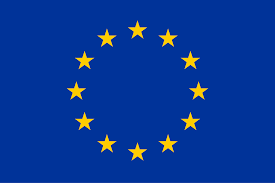The 50 years that changed the United Arab Emirates
When we think of the United Arab Emirates today, our imagination immediately conjures futuristic cities, skylines dominated by avant-garde skyscrapers, cutting-edge infrastructure, and some of the world’s most luxurious commercial districts. But it wasn’t always like this. Until a few decades ago, this land was far from what we know today: its landscapes were dominated by desert, villages relied on fishing and pearl trading, and the modernity that now fascinates the world was only a distant vision.
Today, the UAE is made up of seven Emirates: Abu Dhabi (the capital), Dubai, Sharjah, Umm al-Quwain, Fujairah, Ajman, and Ra’s al-Khaimah. In 1971, President His Highness Sheikh Zayed bin Sultan Al Nahyan united the seven Emirates into a federation—the only one of its kind in the Arab world. Wealth from oil was used to develop the UAE, transforming it into one of the most open and successful economies globally.
What came before
Before the transformation we admire today, the UAE consisted of desert territories, coastal villages, inland oases, and small nomadic communities. The economy relied on fishing, livestock, and, most importantly, the natural pearl industry, which dominated local trade until the crisis caused by Japanese cultured pearls and the Great Depression.
In the 19th century, the British signed a series of treaties with the coastal tribal leaders—the so-called Trucial States—providing protection and ensuring maritime peace, while imposing restrictions on the Emirates’ external relations.
With the increase in geological explorations starting in the 1930s and 1940s, and the subsequent discovery of commercially exploitable oil in the 1950s and 1960s, change began: Abu Dhabi, Dubai, and the other Emirates used oil revenues to build schools, hospitals, roads, and modern infrastructure.
Finally, on December 2, 1971, six Emirates (Abu Dhabi, Dubai, Sharjah, Umm al-Quwain, Fujairah, and Ajman) united to form the United Arab Emirates; Ras al-Khaimah joined the following year. Sheikh Zayed bin Sultan Al Nahyan was chosen to lead the federation, and his vision of cooperation and development was decisive.
Current figures
Although the UAE is a relatively small country (comparable in size to Maine in the United States), it has become an important player in regional and international affairs. Strategically located in the Arabian Gulf and less than eight hours’ flight from two-thirds of the world’s population, the UAE is now a modern crossroads, bridging East and West. In this context, the two main cities, Abu Dhabi and Dubai, have established themselves as regional centers for business, education, culture, and tourism.
In 2024, according to World Bank data, the UAE’s real GDP grew by 3.8%, reaching approximately $537 billion USD. This increase, as noted on the UAE Ministry of Economy and Tourism website, was mainly driven by non-oil sectors, which grew by 4.4% and contributed 75% of total GDP. Despite the expansion of non-oil sectors, the oil industry remains a significant part of the economy.
Goals for the future
Looking ahead, the UAE does not intend to stop at its current achievements. Dubai, in particular, has launched ambitious strategies through 2050 to become a global model of sustainability and economic development. According to the Dubai Government, the Dubai Clean Energy Strategy 2050 aims to provide 100% of energy from renewable sources by 2050, investing in major projects such as the Mohammed bin Rashid Al Maktoum Solar Park and a green hydrogen plant.
At the same time, the Dubai Net Zero Carbon Emissions Strategy 2050 seeks to reduce carbon emissions through advanced technologies, smart infrastructure, and improved energy efficiency across key sectors, from transportation and energy to water and waste management.
On the economic front, the Economic Agenda D33 aims to double Dubai’s GDP by 2033 and position the city among the world’s top destinations for quality of life, investment, and professional opportunities, with a focus on technology, clean energy, healthcare, tourism, and finance.


%402x.svg)
%402x.svg)


